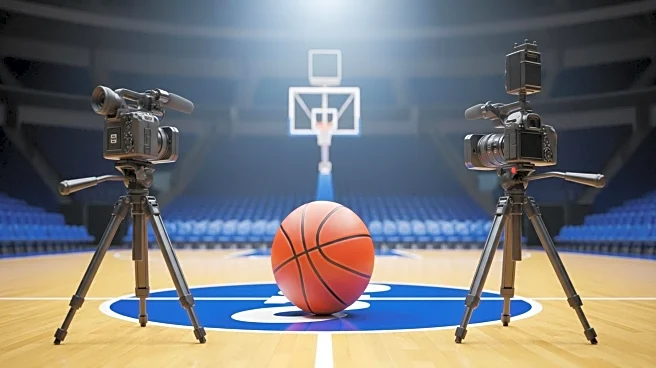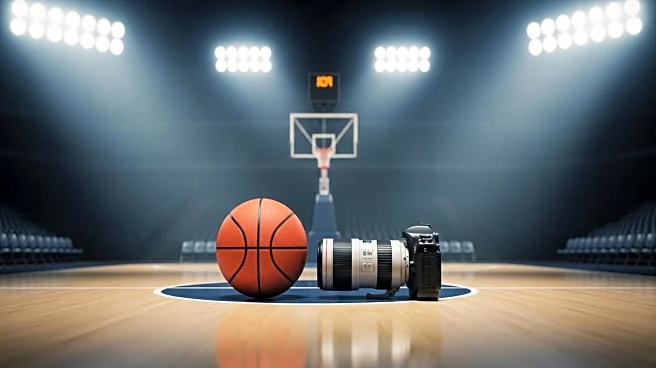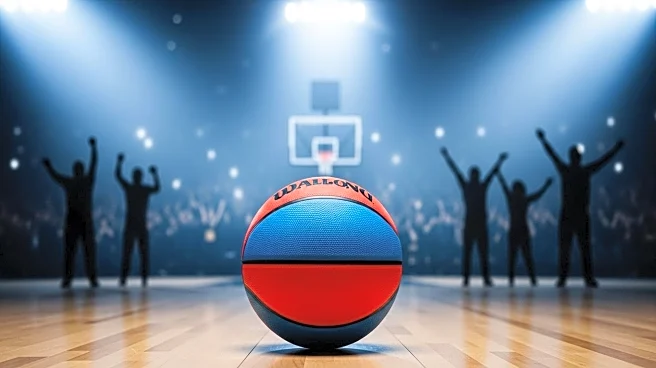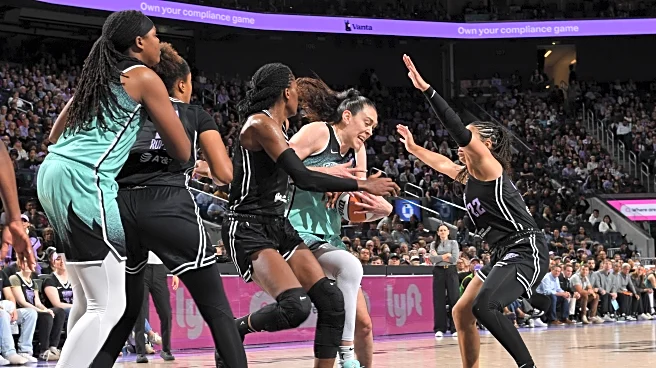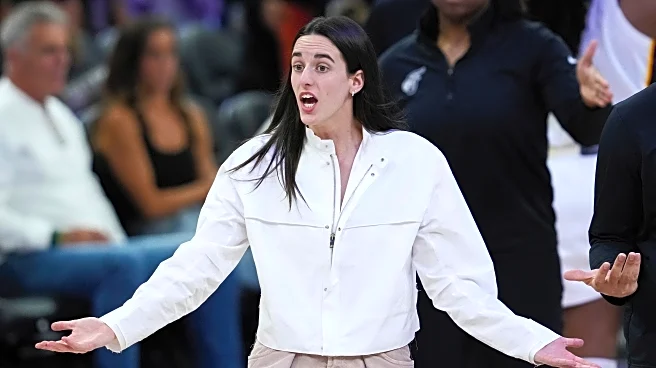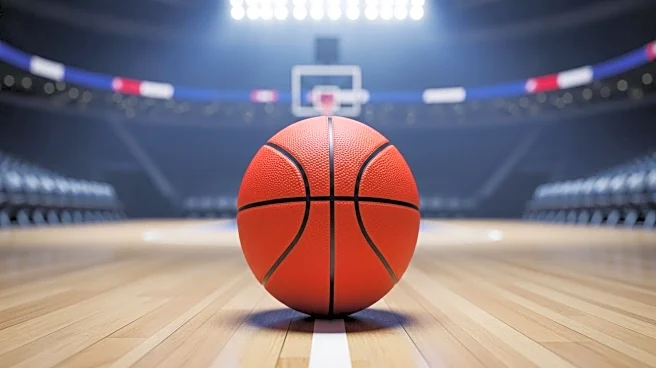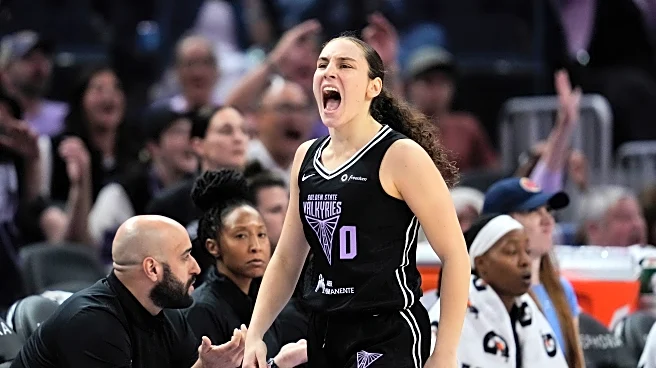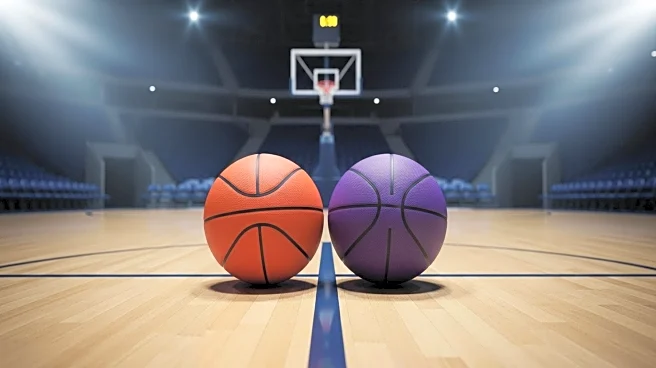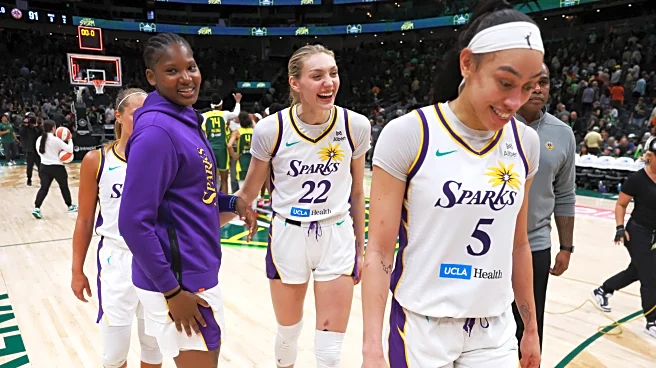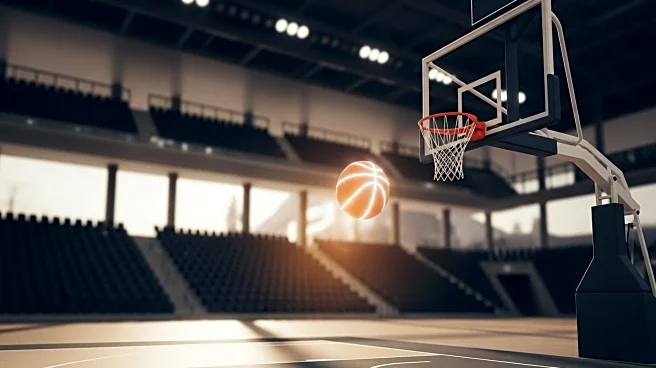What's Happening?
During a recent WNBA game between the Indiana Fever and the Phoenix Mercury, Indiana Fever guard Caitlin Clark experienced a tense moment with a cameraman. The incident occurred when Clark was standing near the Fever's huddle during a timeout, and a cameraman almost hit her in the face with his camera. Clark, visibly shocked, approached the cameraman to express her frustration over the close call. The cameraman appeared confused initially but seemed to offer an apology. This confrontation was one of several tense interactions Clark had during the game, including an exchange with former Fever player DeWanna Bonner. Clark's team lost the game, dropping to No. 8 in the WNBA standings, adding to the frustration of the evening.
Why It's Important?
The incident highlights the challenges athletes face with media presence during games, where close interactions can lead to unexpected confrontations. Caitlin Clark's reaction underscores the importance of maintaining safety and professionalism in sports environments, especially with the increasing presence of social media capturing every moment. Such incidents can affect the reputation of players and teams, influencing public perception and media narratives. The event also reflects the broader issue of athlete safety and the need for clear boundaries between players and media personnel during live events.
What's Next?
The confrontation may prompt discussions within the WNBA and other sports leagues about media protocols and safety measures during games. Teams and league officials might consider implementing stricter guidelines to prevent similar incidents in the future. Additionally, the incident could lead to increased scrutiny of player-media interactions, potentially influencing how games are covered and how athletes are portrayed in the media.
Beyond the Headlines
This event sheds light on the pressures athletes face both on and off the court, where their actions are constantly under public scrutiny. It raises questions about the balance between media access and player privacy, and how these dynamics can impact athlete performance and mental health. The incident also highlights the role of social media in amplifying such moments, which can lead to broader discussions about the ethical responsibilities of media coverage in sports.
